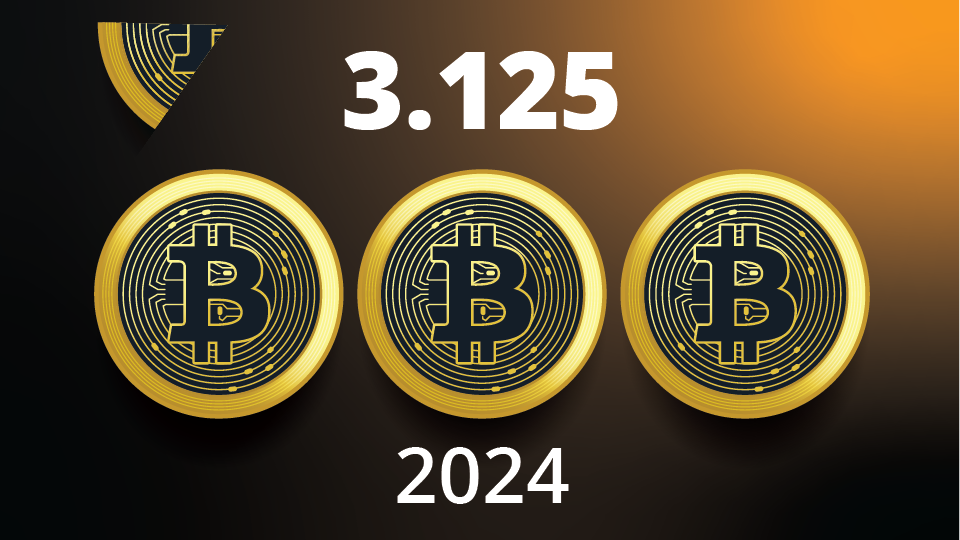Bitcoin 101: A Beginner's Guide
January 27, 2024
Read Time 7 MIN
Once a fringe concept, bitcoin has evolved into a new asset, drawing global investor interest. To fully grasp bitcoin, it's beneficial first to understand the fundamental concept of money. This guide begins by exploring the basics of money and then provides a simple overview of bitcoin and critical considerations for investors evaluating bitcoin ETFs.
- What is Money?
- What is Bitcoin?
- What is a Blockchain?
- Why invest in Bitcoin?
- What is a Bitcoin ETF?
- Are Bitcoin ETFs Regulated?
- Bitcoin ETFs in IRAs: Tax Benefits?
- Investing in a Bitcoin ETF: What to Consider?
What is Money?
Money might make you think of cash and coins, but actually, most of what we use as money today doesn't have a physical form—it's just numbers on a computer. Money is merely a concept, a way for humans to store value and exchange for real goods and services. Different items have stood in for money throughout history, including shiny shells, paper currency, precious metals, grains, and even salt. The key is the shared belief in its value; as long as everyone agrees on its worth, anything can serve the role of money. There are three major functions of money: medium of exchange, unit of account, and store of value.
What is Bitcoin?
Bitcoin acts like a new form of digital money, or more specifically, as a ‘store of value’ due to its scarcity and utilization by millions of individuals worldwide. For those familiar with traditional finance, bitcoin can be thought of as having characteristics of both a commodity and a currency. Bitcoin is likened to digital gold since its quantity is limited, with only 21 million ever to be created1, making it finite and potentially more valuable over time. Some people buy it hoping its value will go up, similar to how people invest in gold or silver. But unlike gold, you can't touch bitcoin because it only exists on the internet. It's stored in a special way using a technology called 'blockchain'.
Bitcoin is the first and most well-known cryptocurrency and was created in 2008 after the financial crisis by an unknown person or group using the pseudonym Satoshi Nakamoto. The original aim? To make a type of money that people could send directly to each other over the internet, without having to go through a bank or any other third party.
What is a Blockchain?
A blockchain is a digital ledger recording transactions, maintained across several computers linked in a peer-to-peer network. Each 'block' in the chain contains a number of transactions, and when a new transaction occurs, it's added to every participant's ledger. This decentralized and public verification process makes it nearly impossible to alter transaction records, enhancing security. Blockchain is the technology underpinning Bitcoin, allowing it to operate independently of a central authority, thus reducing the risk of fraud.
Why Invest in Bitcoin?
1. Store of Value
- Finite Supply: Bitcoin has a fixed limit of 21 million coins, in stark contrast to government-issued currencies, which can be printed in unlimited quantities. Governments often ‘print’ more money to manage national debt or stimulate spending, but this can devalue the currency over time. Bitcoin's capped supply means it could become more valuable as it becomes more scarce, classifying it as a deflationary asset, which is less likely to be devalued by such government actions.
- ‘Halving’ Events: The Bitcoin network reduces bitcoin issuance by half every 210,000 blocks or approximately every four years, a process known as 'halving.' This gradual reduction continues until about the year 2140, when the last bitcoin is mined.
- Possible Inflation-Hedge: As bitcoin is often likened to digital gold, it has the potential to appreciate in value and serve as a hedge against inflation and flight to quality.
- Bitcoin has a predictable monetary policy, unlike government-issued fiat currencies.
2. Institutional Interest: Big investors like hedge funds and asset management firms are now seriously considering Bitcoin as an investment. They see it as a way to diversify their portfolios and protect against inflation, since bitcoin doesn't follow the same patterns as traditional investments like stocks and bonds. Also, the creation of bitcoin-focused exchange-traded funds (ETFs) and similar products makes it easier for more people to invest in Bitcoin, boosting its reputation and acceptance in the financial world.
3. Growing Adoption: Bitcoin is becoming more popular in everyday business. An increasing number of companies accept bitcoin as payment, and new technologies are making it simpler for everyone to use. Additionally, the development of Layer 2 solutions such as the Lightning Network, a system that speeds up bitcoin transactions and reduces costs, is making bitcoin even more practical for everyday transactions.
What is a Bitcoin ETF?
Exchange-traded funds (ETFs) are investment funds that hold a collection of assets and can be bought and sold on exchanges like stocks. Like stocks, each ETF has a unique ticker used to identify it. A bitcoin ETF is a type of ETF that seeks to track the price of bitcoin. People can invest directly in Bitcoin by buying an ETF instead of buying bitcoin on a crypto exchange, which can be complex for some. It's designed for those who want to invest in bitcoin in a simpler and more familiar way, like buying stocks in their brokerage accounts or stock trading apps.
Are Bitcoin ETFs Regulated?
Yes, they are. Like other ETFs and mutual funds, financial agencies regulate bitcoin ETFs. This regulation has grown as more countries, including the U.S., Canada, and Europe, start recognizing bitcoin ETFs. These ETFs show the increasing acceptance of cryptocurrency in both traditional finance and digital asset markets.
Spot Bitcoin ETF vs. Bitcoin Futures ETF?
A spot ETF directly holds bitcoin, aiming to track its market price closely. On the other hand, a bitcoin futures ETF holds bitcoin futures contracts, a type of contract enabling speculation on future price movements without direct bitcoin ownership. Both product types are regulated financial products.
Bitcoin ETFs in Individual Retirement Accounts (IRAs): Tax Benefits?
Investing in a bitcoin ETF within an Individual Retirement Account (IRA) offers tax advantages compared to buying bitcoin directly on a cryptocurrency exchange. Your investments, including a bitcoin ETF, in a traditional IRA, grow tax-deferred. This means you only pay taxes on gains once you withdraw them, potentially leading to more substantial growth over time. A Roth IRA, on the other hand, allows for tax-free growth; contributions are made with after-tax money, but withdrawals, including profits from the bitcoin ETF, are tax-free in retirement. Both types of IRAs provide a more regulated and secure environment for your bitcoin investment while also being more tax efficient than typical crypto exchanges. Consequently, choosing a bitcoin ETF for your IRA investment strategy can be a more secure and tax-efficient way to include Bitcoin in your retirement planning.
Here's a more specific breakdown:
1. Traditional IRA:
- Tax-Deferred Growth: Contributions to a traditional IRA may be tax-deductible depending on your income and other factors. The investments in the account, including a bitcoin ETF, grow tax-deferred. This means you don't pay taxes on the earnings (capital gains or dividends) as they accrue.
- Taxes on Withdrawals: You pay taxes on the money you withdraw during retirement. The withdrawals are taxed as ordinary income at your tax rate.
2. Roth IRA:
- Tax-Free Growth: Contributions to a Roth IRA are made with after-tax dollars; they are not tax-deductible. However, the advantage is that the investments, including any gains from a bitcoin ETF, grow tax-free.
- No Taxes on Qualified Withdrawals: Withdrawals in retirement are tax-free as long as they are qualified (generally, the account must have been open for at least five years, and the account holder must be 59½ years or older).
Investing in a Bitcoin ETF: What to Consider?
Investing in a Bitcoin ETF involves weighing several factors, including risk tolerance, investment objectives, and cryptocurrency market acumen. While some investors may gravitate towards direct ownership of Bitcoin for complete control and decentralization, others might favor the accessibility and regulatory comfort that ETFs provide.
As Bitcoin has grown in popularity, investors are now presented with the opportunity to gain access to the asset class through more familiar options. VanEck is proud to have played a key role in educating investors on the benefits of an ETF access vehicle for those wanting to participate in the Bitcoin investment story. Read our recent blog to learn more about VanEck’s journey with Bitcoin.
To receive more Digital Assets insights, sign up in our subscription center.
Related Topics
Related Insights
IMPORTANT DISCLOSURES
1 Source: Bitcoin: A Peer-to-Peer Electronic Cash System.
Definitions
Bitcoin (BTC) is a decentralized digital currency, without a central bank or single administrator, that can be sent from user to user on the peer-to-peer Bitcoin network without the need for intermediaries.
Risk Considerations
This is not an offer to buy or sell, or a recommendation to buy or sell any of the securities, financial instruments or digital assets mentioned herein. The information presented does not involve the rendering of personalized investment, financial, legal, tax advice, or any call to action. Certain statements contained herein may constitute projections, forecasts and other forward-looking statements, which do not reflect actual results, are for illustrative purposes only, are valid as of the date of this communication, and are subject to change without notice. Actual future performance of any assets or industries mentioned are unknown. Information provided by third party sources are believed to be reliable and have not been independently verified for accuracy or completeness and cannot be guaranteed. VanEck does not guarantee the accuracy of third party data. The information herein represents the opinion of the author(s), but not necessarily those of VanEck or its other employees.
Investments in digital assets and Web3 companies are highly speculative and involve a high degree of risk. These risks include, but are not limited to: the technology is new and many of its uses may be untested; intense competition; slow adoption rates and the potential for product obsolescence; volatility and limited liquidity, including but not limited to, inability to liquidate a position; loss or destruction of key(s) to access accounts or the blockchain; reliance on digital wallets; reliance on unregulated markets and exchanges; reliance on the internet; cybersecurity risks; and the lack of regulation and the potential for new laws and regulation that may be difficult to predict. Moreover, the extent to which Web3 companies or digital assets utilize blockchain technology may vary, and it is possible that even widespread adoption of blockchain technology may not result in a material increase in the value of such companies or digital assets.
Digital asset prices are highly volatile, and the value of digital assets, and Web3 companies, can rise or fall dramatically and quickly. If their value goes down, there’s no guarantee that it will rise again. As a result, there is a significant risk of loss of your entire principal investment.
Digital assets are not generally backed or supported by any government or central bank and are not covered by FDIC or SIPC insurance. Accounts at digital asset custodians and exchanges are not protected by SPIC and are not FDIC insured. Furthermore, markets and exchanges for digital assets are not regulated with the same controls or customer protections available in traditional equity, option, futures, or foreign exchange investing.
Digital assets include, but are not limited to, cryptocurrencies, tokens, NFTs, assets stored or created using blockchain technology, and other Web3 products.
Web3 companies include but are not limited to, companies that involve the development, innovation, and/or utilization of blockchain, digital assets, or crypto technologies.
All investing is subject to risk, including the possible loss of the money you invest. As with any investment strategy, there is no guarantee that investment objectives will be met and investors may lose money. Diversification does not ensure a profit or protect against a loss in a declining market. Past performance is no guarantee of future performance.
© Van Eck Associates Corporation.
Related Funds
IMPORTANT DISCLOSURES
1 Source: Bitcoin: A Peer-to-Peer Electronic Cash System.
Definitions
Bitcoin (BTC) is a decentralized digital currency, without a central bank or single administrator, that can be sent from user to user on the peer-to-peer Bitcoin network without the need for intermediaries.
Risk Considerations
This is not an offer to buy or sell, or a recommendation to buy or sell any of the securities, financial instruments or digital assets mentioned herein. The information presented does not involve the rendering of personalized investment, financial, legal, tax advice, or any call to action. Certain statements contained herein may constitute projections, forecasts and other forward-looking statements, which do not reflect actual results, are for illustrative purposes only, are valid as of the date of this communication, and are subject to change without notice. Actual future performance of any assets or industries mentioned are unknown. Information provided by third party sources are believed to be reliable and have not been independently verified for accuracy or completeness and cannot be guaranteed. VanEck does not guarantee the accuracy of third party data. The information herein represents the opinion of the author(s), but not necessarily those of VanEck or its other employees.
Investments in digital assets and Web3 companies are highly speculative and involve a high degree of risk. These risks include, but are not limited to: the technology is new and many of its uses may be untested; intense competition; slow adoption rates and the potential for product obsolescence; volatility and limited liquidity, including but not limited to, inability to liquidate a position; loss or destruction of key(s) to access accounts or the blockchain; reliance on digital wallets; reliance on unregulated markets and exchanges; reliance on the internet; cybersecurity risks; and the lack of regulation and the potential for new laws and regulation that may be difficult to predict. Moreover, the extent to which Web3 companies or digital assets utilize blockchain technology may vary, and it is possible that even widespread adoption of blockchain technology may not result in a material increase in the value of such companies or digital assets.
Digital asset prices are highly volatile, and the value of digital assets, and Web3 companies, can rise or fall dramatically and quickly. If their value goes down, there’s no guarantee that it will rise again. As a result, there is a significant risk of loss of your entire principal investment.
Digital assets are not generally backed or supported by any government or central bank and are not covered by FDIC or SIPC insurance. Accounts at digital asset custodians and exchanges are not protected by SPIC and are not FDIC insured. Furthermore, markets and exchanges for digital assets are not regulated with the same controls or customer protections available in traditional equity, option, futures, or foreign exchange investing.
Digital assets include, but are not limited to, cryptocurrencies, tokens, NFTs, assets stored or created using blockchain technology, and other Web3 products.
Web3 companies include but are not limited to, companies that involve the development, innovation, and/or utilization of blockchain, digital assets, or crypto technologies.
All investing is subject to risk, including the possible loss of the money you invest. As with any investment strategy, there is no guarantee that investment objectives will be met and investors may lose money. Diversification does not ensure a profit or protect against a loss in a declining market. Past performance is no guarantee of future performance.
© Van Eck Associates Corporation.




